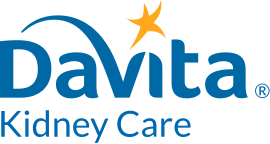If you were stranded on a desert island, you would feel thirsty sooner than you would feel hungry. We are told the healthy body normally needs up to eight glasses of water a day to maintain fluid balance. For people in the later stages of chronic kidney disease (CKD), these normal amounts of fluid can build up in the body and be dangerous.
Fluid control for those on hemodialysis
Fluid restriction can help you feel comfortable before, during and after your dialysis sessions. Even though dialysis gets rid of excess fluid and waste in the body, it’s not as effective as healthy kidneys that work 24 hours a day, seven days a week. Most people on hemodialysis get treatments three times a week for about three or more hours at a time. This means, in the days between your dialysis treatments, your body holds on to excess fluid and waste your kidneys cannot remove.
Going over your recommended fluid allowance can cause swelling and increase your blood pressure, which makes your heart work harder. Too much fluid can build up in the lungs, making it difficult to breathe.
Hemodialysis removes fluid as the blood is filtered through the dialysis machine. However, there is a limit on how much fluid can be safely removed during a dialysis session. If you exceed your fluid allowance, sometimes an extra dialysis session may be required to remove all the extra fluid.
Fluid control for those on peritoneal dialysis (PD)
People on peritoneal dialysis (PD) may not be as limited with their fluids as people on hemodialysis. This is because PD treatments are performed every day, unlike hemodialysis, which is done several times a week.
But patients on PD are encouraged to keep track of their fluid intake and the amount of fluid removed in their dialysis exchanges. Too much fluid can still lead to complications like swelling, high blood pressure and shortness of breath.
Determining fluid restriction
Fluid restriction may vary for each individual patient. Factors such as weight gain between treatments, urine output and swelling are considered. If you’re on hemodialysis, your weight is recorded before and after your dialysis session. Your nurse uses weight changes to help determine how much fluid to remove during dialysis. If you’re on PD, your nurse will have you record your weight every day. Sudden weight gain may mean you are drinking too much fluid. Your dietitian will coach you on individual goals for your fluid intake.
For dialysis patients, the complications of excess fluid are:
- High blood pressure
- A sudden drop to low blood pressure (generally occurs during hemodialysis)
- Shortness of breath (and in some instances, fluid in the lungs)
- Heart problems, which can include a fast pulse, weakened heart muscles and an enlarged heart
If you want to begin an exercise program, let your doctor and healthcare team know. Exercise may change your fluid requirements, especially if you are exercising and perspiring heavily. Your dietitian can coach you on how much fluid to drink.
Tips for managing your thirst
Your dietitian, as well as fellow patients,can give you many helpful hints to manage your thirst. Here are some tips to get you started:
- Limit the amount of sodium and spicy foods in your diet.
- Be aware of hidden fluids in foods. Foods with high water content include gelatin, watermelon, soup, gravy and frozen treats like PopsiclesTM and ice cream.
- Stay cool. Keeping cool will help reduce your thirst. Try drinking cold liquids instead of hot beverages.
- Sip your beverages. Sipping will let you savor the liquid longer. Use small cups or glasses for your beverages.
- Try ice. Many patients find that ice is more satisfying than liquids. Try freezing your allotted amount of water into an ice tray. You can also try freezing approved fruit juices in ice trays for a special treat. Remember to include the ice you consume when tracking your fluid intake.
- Take your medicines with your meal, if possible. Try swallowing pills with applesauce instead of liquids.
- Battle dry mouth by using mouthwash or brushing your teeth. Sucking on hard candy or a wedge of lemon or lime will also help.
- If you have diabetes, maintain good blood glucose levels. High blood glucose levels will increase your thirst.


